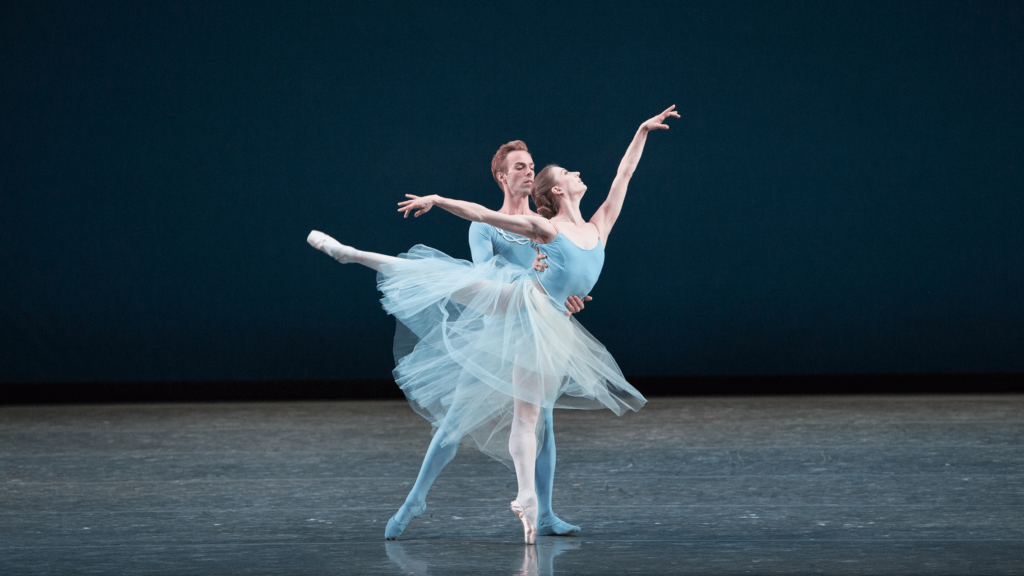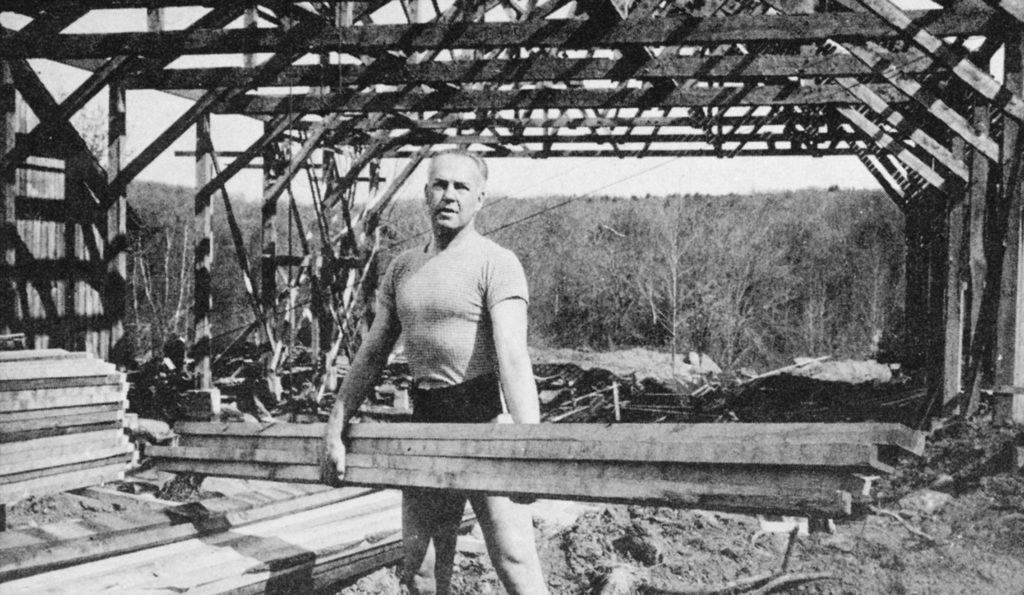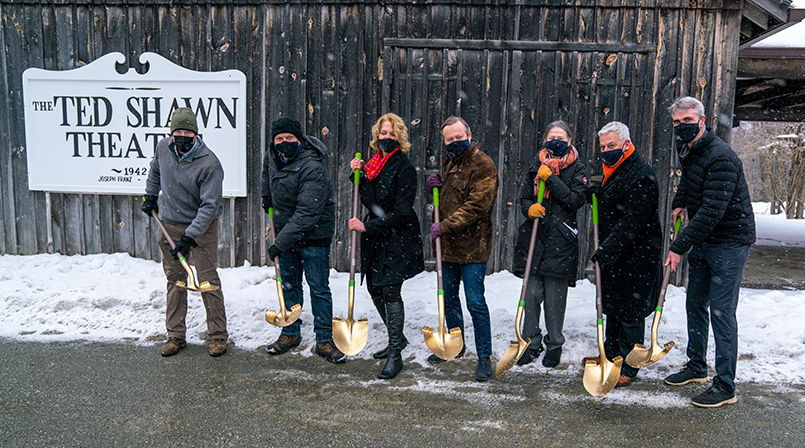
When construction for the Ted Shawn Theatre was underway in the early 1940s, Ted Shawn himself was not interested in installing an orchestra pit. “The theatre was not designed for an orchestra pit,” he wrote in his 25th annual newsletter on February 22nd, 1969. One was installed anyway, but “the job had not yet been done as it had to be done. So our fine contractor-builder… came and went over the whole job. All of this time we were getting nearer and nearer to the opening of the season… there were actually rehearsals going on on the stage for the opening performance, and bulldozers were still working underneath the stage at the same time.”
For years, the Ted Shawn Theatre operated without an orchestra pit, but this doesn’t mean the venue excluded performances that called for live music. Director of Technical Production, Vinny Vigilante, explains that “we’d remove the first few rows of chairs and build a platform every single time it was needed. It was a process to say the least, and the setup led to poor sightlines for the audience. Instruments would block people’s views.”
So when Jacob’s Pillow undertook a renovation of the Ted Shawn Theatre between January 2021 and June 2022, the project included the construction of an orchestra pit—which can be replaced by seating when not in use. In the tenth and final week of our 90th anniversary festival, Miami City Ballet will be the first company to use it, performing George Balanchine’s iconic Serenade set to Tchaikovsky’s Serenade for Strings in C.

“There are works, like Serenade, that we have never been able to present, in this case because it’s only allowed to be presented with live music,” Executive and Artistic Director Pamela Tatge said in an interview with Vigour Times.
The first ballet that Balanchine made in the United States, Serenade consists of a series of chance encounters and errors; “seventeen girls came to the first rehearsal, but only nine turned up at the second, and six at the third. So he made the opening tableau—a ravishing sight, people still gasp—for seventeen. Then he made a section for nine, then one for six. When a girl fell, he put that in. When another showed up late, he added that” writes Joan Acocella for The New Yorker. The ballet was reworked several times in the years following its premiere, and Balanchine reversed the order of the last two movements in the score to end with a tone of wistful sadness.

The Ted Shawn Theatre has similarly patch-worked origins. Shawn purchased the Carter Family Farm as a place to establish a revolutionary all-male dance company in 1931. By 1933, Shawn and his Men Dancers had begun giving public lecture demonstrations in the Tea Garden (the first performances of Jacob’s Pillow). After touring from 1933-1940, (while Balanchine was premiering Serenade in 1935) Shawn was deeply in debt. He leased the property twice before local supporters formed the Jacob’s Pillow Dance Festival Committee, raising $50,000 to buy the property from Shawn, name him director, and build a theater, all despite the World War II effort. The Ted Shawn Theater opened its doors on July 9, 1942, and the rest, as they say, is history.
Acocella writes, “[Serenade] is… about what it’s like to have nothing. It is a story about hope. If you are young and don’t know anything or have anything, you can change that. If you aren’t beautiful, you can become beautiful” (The New Yorker). It’s hard not to think of Jacob’s Pillow in the same way: a local family farm turned international dance festival celebrating its 90th anniversary.
Written by Hannah Lieberman. Published August 2022.